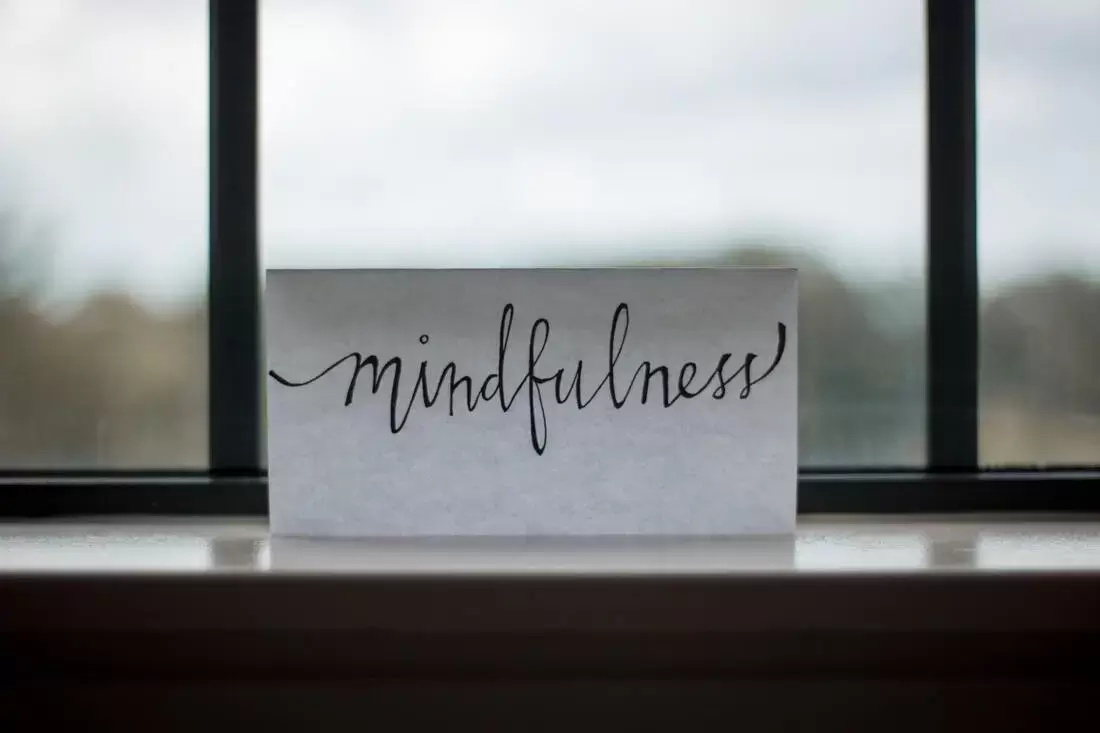|
🧘🏽♀️Close your eyes for one minute and simply notice what your mind does.Stay on the lookout for any thoughts or images, as if you were a wildlife photographer waiting for an exotic animal to emerge from the undergrowth.
If no thoughts or images appear, keep watching; sooner or later they will show themselves. Notice where those thoughts or images seem to be located: in front of you, above you, behind you, to one side of you, or within you? Once you’ve done this for a minute, open your eyes again. ❇️ What you experienced were two distinct processes going on. First there was the process of thinking —in other words, some thoughts or images appeared. Then there was the process of observing; that is, you were able to notice or observe those thoughts and images. It’s important to experience the distinction between thinking and observing. 🧘🏽♀️Whatever the urge, the first step is to notice it. (It often helps to acknowledge silently, ‘I’m having the urge to do X.’) The second step is to check in with your values: ‘Will acting on this urge help me be the person I want to be? Will it help me take my life in the direction I want?’ If the answer is yes, then go ahead and act, using that urge to guide you and give you momentum. But if the answer is no, then instead take some action that’s more in line with your values. 🌸Mindfulness is connection🌸 🔹Connection is the process of making full contact with your experience in this moment. 🔹Connection means being fully aware of your here & now experience, being interested, open & receptive to that experience. 🔹Connection is about waking up, noticing what’s happening, engaging with the world & appreciating the fullness of every moment. 🔹Connection happens through the observing self. 👉the observing self is by nature non-judgemental. Difference between the observing self and the thinking self: ❇️the thinking self ❇️ It is the part that thinks, plans, judges, compares, creates, imagines, visualizes, analyzes, remembers, day dreams and fantasies. 🔆the observing self🔆 It is the part responsible for focus, attention and awareness. It can pay attention to your thoughts but it does not think. It registers the experience directly. 👉An example: You’re watching a magnificent sunset. There are moments when all you are doing is looking at it. Your mind is quiet; there are no thoughts running through your head, you’re just registering the sensory information such as the colours of the scene. This is your observing self doing its job: observing, not thinking When you start thinking: ‘Wow, look at all those colours! This reminds me of that sunset we saw on holiday last year. I wish I had my camera. It’s so beautiful and I am going to miss it! 🌸The more attention your observing self pays to the commentary of the thinking self, the more you lose direct contact with that sunset. The observing self is key part of Mindfulness Based on the ACT book, the Happiness Trap) Check more here
32 Comments
5/9/2022 14:03:54
Really informative article, I had the opportunity to learn a lot, thank you. https://freecodezilla.net/wpforms-pro-plugin-free-download/
Reply
12/9/2022 09:32:15
Really informative article, I had the opportunity to learn a lot, thank you. https://odemebozdurma.com/
Reply
14/9/2022 22:31:59
Really informative article, I had the opportunity to learn a lot, thank you. https://bit.ly/site-kurma
Reply
30/9/2022 17:13:02
It's great to have this type of content. Good luck with your spirit. Thank you. https://bit.ly/site-kurma
Reply
4/10/2022 22:13:27
I think this post is useful for people. It has been very useful for me. Looking forward to the next one, thank you. https://escortnova.com/escort-ilanlari/kirklareli-escort/kofcaz-secort/
Reply
5/10/2022 15:34:33
It was a post that I found very successful. Good luck to you. https://escortnova.com/escort-ilanlari/hakkari-escort/semdinli-escort/
Reply
6/10/2022 07:46:54
I follow your posts closely. I can find it thanks to your reliable share. Thank you. https://escortnova.com/escort-ilanlari/aydin-escort/germencik-escort/
Reply
6/10/2022 14:48:23
I support your continuation of your posts. I will be happy as new posts come. Thank you. https://escortnova.com/escort-ilanlari/trabzon-escort/caykara-escort/
Reply
7/10/2022 07:21:34
I think the content is at a successful level. It adds enough information. Thank you. https://escortnova.com/escort-ilanlari/denizli-escort/cardak-escort/
Reply
8/10/2022 08:39:11
Thank you for your sharing. I must say that I am successful in your content. https://escortnova.com/escort-ilanlari/tokat-escort/artova-escort/
Reply
8/10/2022 20:24:19
Thoughtful and real content is shared. Thank you for these shares. https://escortnova.com/escort-ilanlari/giresun-escort/tirebolu-escort/
Reply
21/11/2022 12:14:55
Tıkla evde calismaya basla: https://sites.google.com/view/evden-ek-is/
Reply
9/12/2022 12:41:20
Tiktok takipçi satın almak için tıkla: https://takipcialdim.com/tiktok-takipci-satin-al/
Reply
9/12/2022 12:47:18
İnstagram beğeni satışı yapan firmamıza göz atın: https://takipcialdim.com/instagram-begeni-satin-al/
Reply
15/12/2022 12:19:21
takipçi satın al ve sitemizi ziyaret et: https://takipcim.com.tr/
Reply
28/4/2023 00:10:36
Steroid Satın Al: https://www.anabolickapinda14.com/urun/
Reply
9/8/2023 13:49:16
Steroid Siparis Steroid Fiyatlari Steroidler Anabolizan Orjinal Steroid Steroid Satis Steroid Satın Al Steroid Siparis Et
Reply
Leave a Reply. |
AuthorHi there! Archives
January 2022
Categories |

 RSS Feed
RSS Feed
